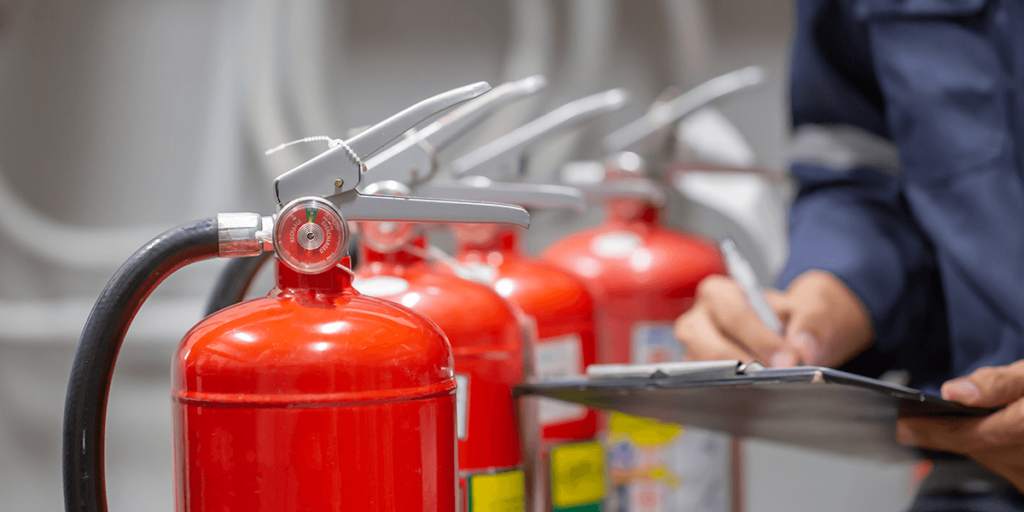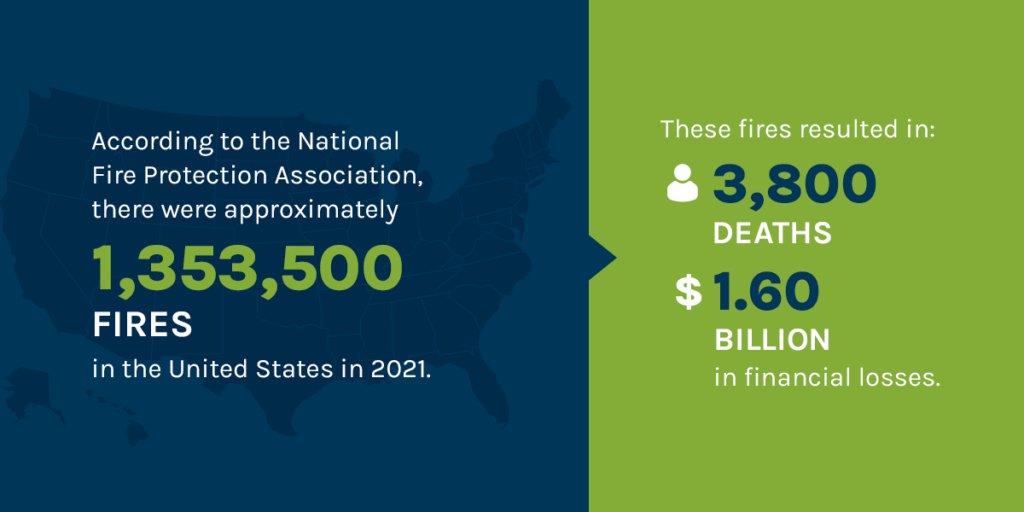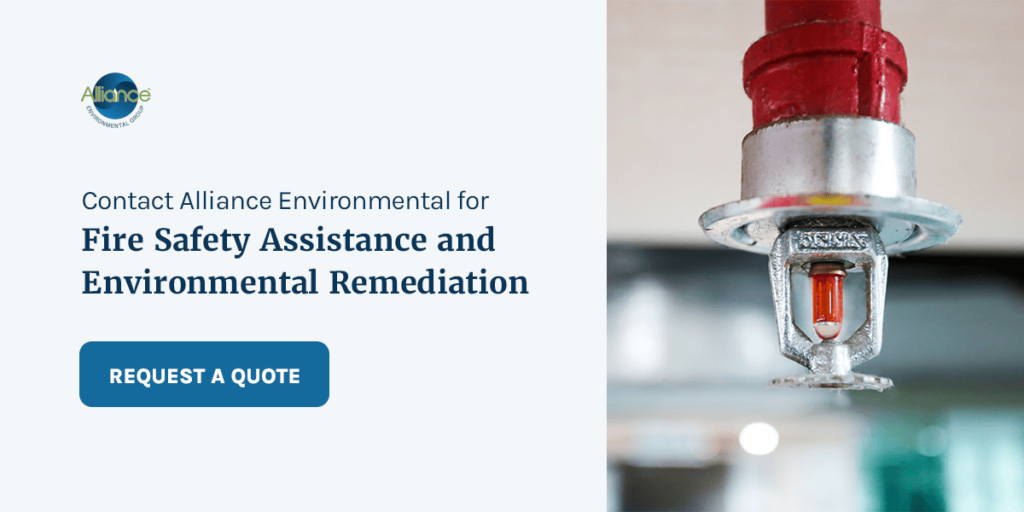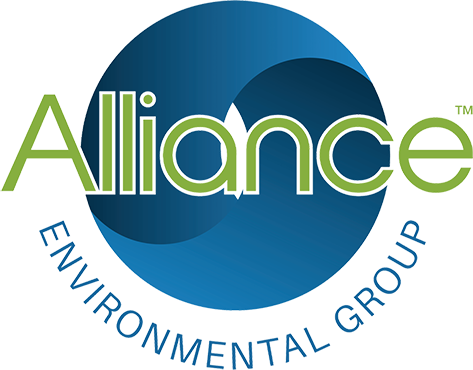
A fire can spread quickly if hazards aren’t appropriately managed and employees aren’t trained in emergency evacuation procedures. Conducting fire risk assessments can help you maintain a safe workplace environment and safeguard your employees and your building.
What Is a Fire Risk Assessment?
A fire safety risk assessment examines a location or business and determines the chances of a fire hazard. A risk assessment for fire safety identifies potential ignition sources, fuel sources and people who could be harmed in a fire. Overall, the assessment considers how likely a fire is to occur and the extent of damage or harm a fire would cause in the specific environment.
These risk assessments typically involve:
- Noting the presence of working fire alarms and other warning or detection systems
- Checking fire doors, fire dampers and fire barriers
- Cleaning fire sprinkler heads
- Examining fire safety labeling and signage
- Removing flammable substances or ensuring they’re stored correctly
- Training employees on fire safety procedures
- Ensuring access to fire fighting equipment, such as fire extinguishers
- Determining the needs of at-risk individuals, such as people with disabilities or older adults
Once the responsible party has completed the risk assessment, the next step is to develop a plan to mitigate these risks or reduce the risk to a safer level. Some ways to mitigate or minimize risk include changing work activities, improving existing fire safety standards and adding additional safety measures. Fire risk assessments should also be regularly reviewed to ensure all standards and training are up-to-date and relevant.
Why It’s Critical to Complete a Fire Risk Assessment
Fire risk assessments can help you save lives. While you may not always be thinking of a fire occurring or fire safety, fires can happen anywhere at any time. According to the National Fire Protection Association, there were approximately 1,353,500 fires in the United States in 2021. These fires resulted in 3,800 deaths and $16.0 billion in financial losses.

Completing an assessment rather than waiting until a fire becomes an immediate threat can reassure you your business is prepared to handle a fire. All hazards are handled during a fire risk assessment so you can focus on getting yourself and others to safety in an emergency.
How the Fire Risk Assessment Process Works
Fire risk assessments aim to identify hazards, the risks they pose if a fire occurs and existing fire safety standards. All fire assessments must be comprehensive, provide clear mitigation actions and identify at-risk individuals. Fire risk assessments use the five following steps to help identify response and mitigation efforts:
1. Locate Hazards
The first step is to identify potential hazards within your workplace. You’ll want to look for any potential fuel, ignition and oxygen sources. You should also consider the structural components of your workplace — vacant attics, multiple flammable components and ductwork can all help a fire spread. Identifying these hazards can help you address these problems and prevent fires from occurring or mitigate the risk if a fire were to happen.
2. Identify At-Risk Individuals
Some of your employees may be at more risk for harm during a fire, so it’s essential to consider anyone who could be on-premise during a fire. First, you’ll want to consider anyone who works near flammable materials at your workplace or workers in isolated areas. These individuals may have an increased risk of being caught in a fire or being alerted late if a fire occurs.
You should also consider others who may be on-premise, such as:
- Older adults
- People with disabilities
- Visitors or guests
- Large groups
- Temporary or contracted workers
- Parents with children
- People with slower response times
Understanding who may be at a higher risk of injury at your workplace can help you create more effective evacuation and fire safety solutions.
3. Assess and Improve Fire Safety Standards for Prevention and Mitigation
Here, you’ll need to assess the risk for each part of your workplace. Some places, such as those surrounded by ignition sources or flammable materials, may be at a higher risk than others. Places with low risk generally have the fewest flammable materials and ignition sources.
Once you’ve determined the risk level, you can instate the appropriate response, which can include:
- Upgrading fire warning systems
- Moving flammable materials away from ignition sources
- Adding additional fire exits
- Replacing fire doors and fire dampers
- Cleaning fire sprinkler heads
- Improving fire stopping and cable management
- Tagging assets located inside the building
- Using signage and educational materials
- Training employees on fire safety
4. Create Documentation, Emergency Plans and Training
Once you’ve completed your fire risk assessment, you should note everything you’ve found in writing to create documentation for your records. After documenting your findings, create an emergency plan to dictate what should happen if a fire occurs. Speak with your local fire service to inform your emergency planning and ensure all employees have the proper information to prepare for a fire.
All employees and people involved with your operations should be aware of the fire risk levels at your workplace. Everyone should have access to the safety standards and appropriate training to mitigate the risk in an emergency. It can be beneficial to hold annual fire training sessions to ensure everyone is up-to-date on your business’s latest emergency plan.
5. Review the Fire Risk Assessment
You should regularly revisit your fire risk assessment to ensure it remains relevant and suited to your changing business. There are many reasons you’ll need to review and update your fire safety risk assessment, including:
- Changes to the number of employees or people involved with your facility
- Modifications to building and usage
- Changes to the materials used on-site
- Introduction of new machinery
- Changes in equipment usage
- Changes to existing processes
- New shift patterns for employees
Reviewing and updating your fire risk assessment any time anything changes with your business can help you keep your fire response and prevention strategies up-to-date, accurate and effective.
Contact Alliance Environmental for Fire Safety Assistance and Environmental Remediation
Fires can happen anywhere, and your business is no exception. Alliance Environmental is here to help you prepare your business against fires with our comprehensive fire life safety services, which include fire door inspections and repairs, fire door replacement, fire sprinkler cleaning, asset tagging and more.
If you experience a fire at your facility, our environmental remediation services are your go-to solution to get your business back on track. We can help you restore your business’s interior and indoor air quality to what it was before the fire.
Whether you need assistance in preventing a fire or recovering after one, we can help. Request a quote for our services today to get started.




